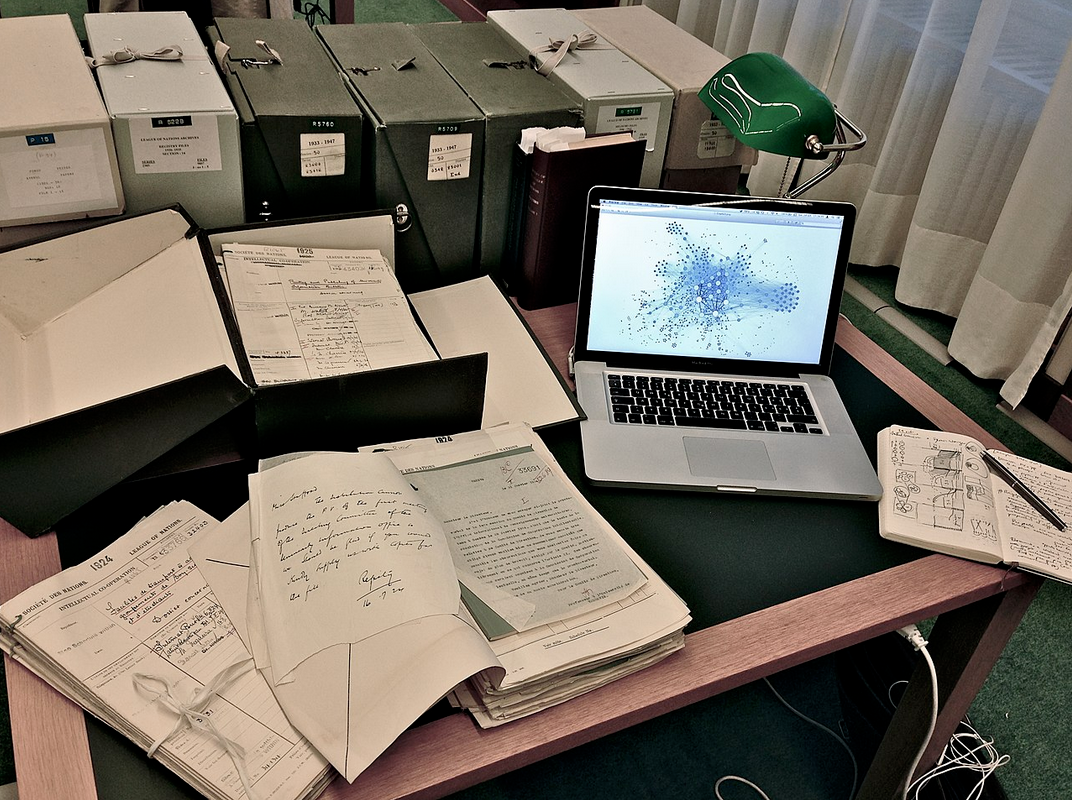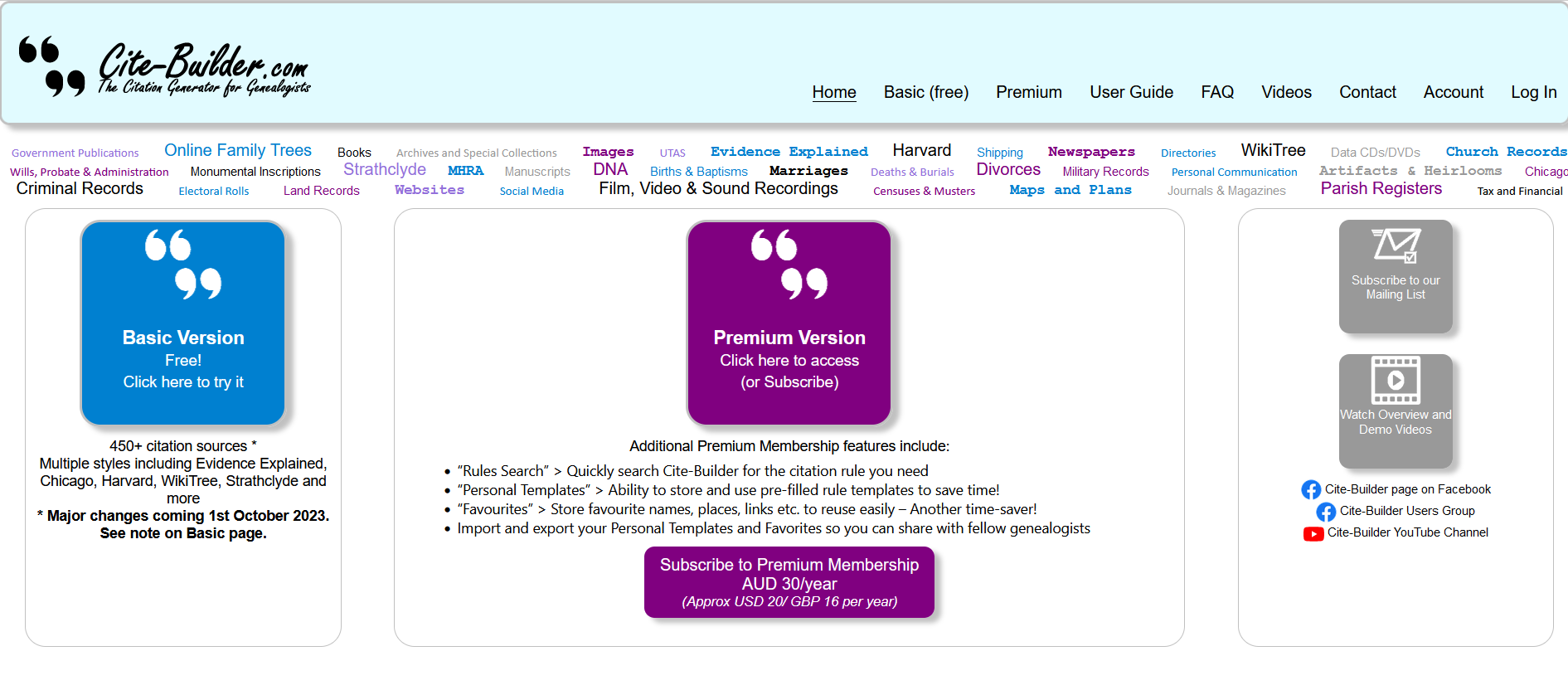Best Genealogy Citation Generator Sites
What Are Citations?
Okay so let's start at the beginning and clarify what we mean by citations in genealogy. Well essentially when we discover something about our family history we have some form of source that provides the proof. In order to note where we found the information should we want to recheck it or direct someone else to a document we need a source citation.

Essentially across most mediums of research in which we need to attribute information to previous work we need to use citations. These citations give credit for details in our own work we have borrowed or found in existing documents or other people's research.
It creates a roadmap of sorts to your research process, your findings and the veracity of your research. It allows others to track down the same records you have used to check your work and see that you have performed the best possible research to achieve your goals.
Why Should We Cite Sources?
In our research we cite sources from many different places, official documents, sources, interviews, emails and even repository collections. The evidence of our family history can be found in so many places so we must record where we find things to ensure we can not only find them again ourselves but also that someone else can find it as well, should they need to confirm our research.
Basically speaking we need proof for our family history claims otherwise we could make outlandish claims about our heritage. Using source citations to accompany the facts we are presenting in our tree adds credibility. It's like showing your work for a math test. It proves that you didn’t cheat or make a lucky guess.
Source citations are especially important for those looking to publish their findings or earn credentials from bodies such as the Board for Certification of Genealogy. Citations are not the fun part of genealogy but if you are going to do things right then you need to use them in your work especially in any written reports you create.
Elements of a Genealogy Citation
There are five portions to a professional source citation which seek to answer the questions that make your information findable again. These are Who, What, When, Where in and Where at. These all play an important part in the citation so let's take a closer look at each before we move on.

Who
This is pretty simple: it means who created the document or proof you are looking to cite. This could be a government agency who issued a birth certificate, an article written by someone, a picture taken by an individual. Basically it is an explanation of the origin of the source you are looking to cite.
What
Next we look at what the source is. It could be a birth record, a photograph, a ship's manifest, even an audio file. There are so many potential sources we may come across so it is vital we know what type of source it is we are looking to find with the citation.
When
It is important to note in the citation when the source was created as this can have a big impact on how verifiable and reliable your evidence is. For example a birth record filled out upon a person's birth would be more credible as proof of date of the event than an obituary written years later.
It is also important to note that the date of the event listed in the source be mentioned as well if it is different from the document's own creation date.
Where In
Often records are part of collections so the where in aspect refers to how you might find it in the collection. This could be a page number, date range, section. Essentially, it should contain as much detail as can be given to lead the reader to the right place in a collection or document to find the information the source claims to support.
Where At
Finally we come to "where at" which as it sounds is literally where you can find the proof. This could be a government repository, online database, personal records of an individual, named book etc. This part of the citation makes it clear where you need to search for the source for the information.
How Are The Elements Put Together?
There is no one perfect way to format a source citation; the important thing is to get all of the aspects into the citation with as much detail as possible. It needs to be clear and easy to read making it a simple task to relocate the document or files you have used.
Online Citation Creation Sites
Now we come to the point of our article today, ideally we should learn how to write our own citations. I know this can be daunting; it certainly was for me in the early days of my research. That said there are some online options to help you craft your first source citations and help you gradually learn how to put them together yourself.
Cite-Builder
This is likely the best option on the market right now as it was created to build genealogy citations which can be different from other formats. It is a recent tool unveiled in 2022 at the RootsTech conference and uses the evidence explained style most suitable for genealogy sources.

Purdue Online Writing Lab - Chicago Manual of Style 17th Edition
This site by Purdue University offers a variety of citation styles to suit your needs and may even work for some basic genealogy source citation creation.
Zotero
Zotero is a free online tool designed to help in collection, organization, annotation and citation of research projects. It is essentially a one stop shop to make your research papers the best they can be.
Final Thoughts
Genealogy source citations can be extremely varied and it can be tricky to distill them into a single style. Ideally Evidence Explained: History Sources from Artifacts to Cyberspace by Elizabeth Shown Mills might be a worthwhile read to help you learn the basics and expectations of citations for your genealogy projects.
Link To or Reference This Page
We spent a lot of time downloading, cleaning, merging, and formatting the data that is shown on the site.
If you found the data or information on this page useful in your research, please use the tool below to properly cite or reference Name Census as the source. We appreciate your support!
-
<a href="https://namecensus.com/blog/best-genealogy-citation-generator-sites/">Best Genealogy Citation Generator Sites</a>
-
"Best Genealogy Citation Generator Sites". NameCensus.com. Accessed on April 27, 2024. https://namecensus.com/blog/best-genealogy-citation-generator-sites/.
-
"Best Genealogy Citation Generator Sites". NameCensus.com, https://namecensus.com/blog/best-genealogy-citation-generator-sites/. Accessed 27 April, 2024
-
Best Genealogy Citation Generator Sites. NameCensus.com. Retrieved from https://namecensus.com/blog/best-genealogy-citation-generator-sites/.
